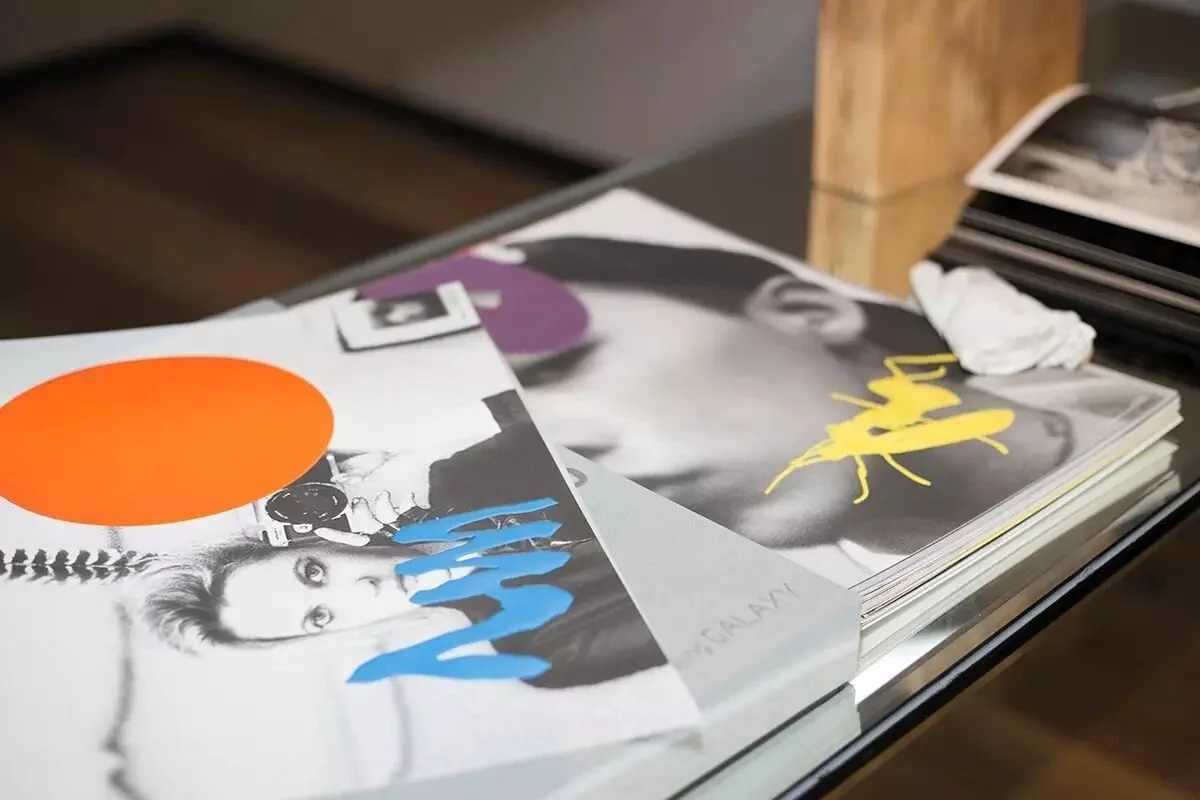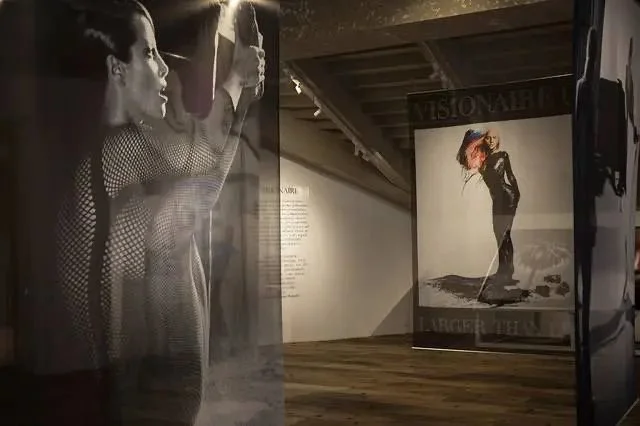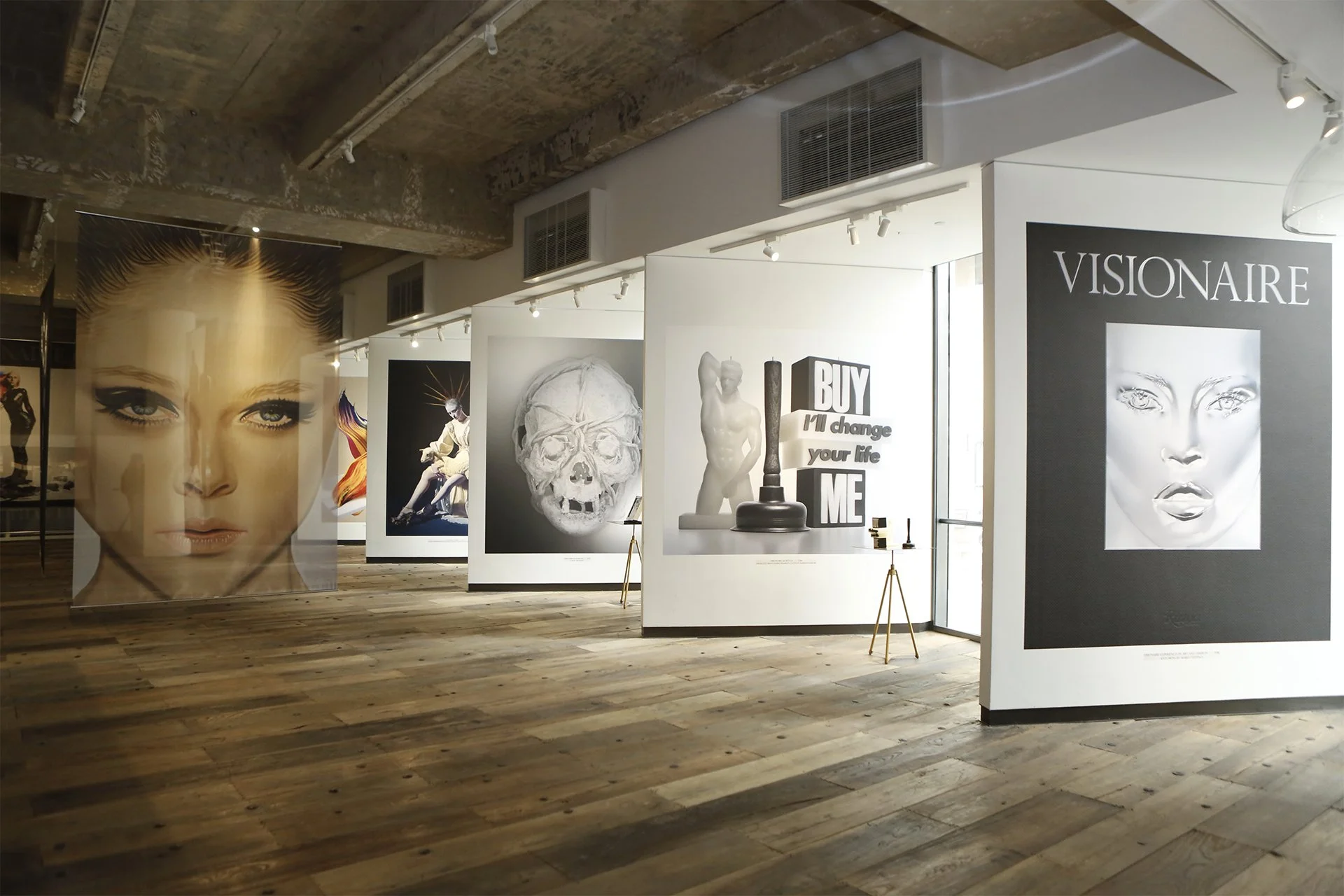CHAO CELEBRATING 25 YEARS OF CREATIVITY IN 25 HOURS
On December 11, 2016, VISIONAIRE—the maverick New York–based creator of original art publications—made its debut in China with an exhibition at CHAO Art Center in Sanlitun, Beijing. The presentation featured a selection of its limited-edition issues alongside the newly released 25th-anniversary anthology. VISIONAIRE co-founders Cecilia Dean and James Kaliardos attended the opening and joined the founder of the CHAO brand for a roundtable titled “What Is Publishing?” at the CHAO Echo Chamber, where they shared the stories behind VISIONAIRE and their distinctive perspectives on media, creativity, and the publishing landscape.
The Space of Publishing
“On one end, we work closely with the friends and artists we admire; on the other, we reach out to and connect with readers and the public. For different themes, issues, and eras, VISIONAIRE has chosen different forms of expression. Yet overall, this is how we have always defined what we do—and what we remain committed to. It all comes to us quite naturally.”
“What is publishing?”
Behind the VISIONAIRE co-founder and former supermodel, a slideshow was playing—using Issue 64, Art, as its template—showing a series of workflows that are quintessentially VISIONAIRE. Invited as the guest curator, the renowned conceptual artist John Baldessari began by choosing ‘Selfie’ as his point of entry, a light yet incisive way to tap into the contemporary semantics of art. He then overlaid his signature high-chroma color blocks and doodles onto the selfie images sent in by figures such as James Franco and Scarlett Johansson. Through large-scale printing, he further heightened their visual impact and artistic texture.
But publication was not the end of the project. After Art was released, VISIONAIRE immediately translated those valuable artistic gestures into physical form—installing several art pieces, reminiscent of ‘selfie stickers,’ in the lobby of New York’s Chrysler Building, where anyone could take a selfie with them. In conceptual terms, these installations became an extension of the magazine’s curatorial project.
What Cecilia Dean so lightly describes as ‘communication and connection’ is distilled in every issue of the magazine: visionary leading artists, celebrities with vast public influence, readers who could be anyone, tourists who just happen to pass through the Chrysler Building, as well as the mature brands and capital so deeply ingrained in public consciousness that they often go unnoticed. Issue 64, Art, for instance, was produced in partnership with Samsung’s Galaxy smartphone series. With its remarkable creativity, VISIONAIRE transformed the sponsor’s products into artistic vessels, granting them a compelling contemporary resonance. Over the past 25 years, VISIONAIRE has also worked alongside legendary brands such as Louis Vuitton, Hermès, Tiffany, and Van Cleef & Arpels to create—and shape—a series of works with heightened public visibility and cultural awareness.
Image Orientation
James Kaliardos, VISIONAIRE’s other co-founder, is now standing before a nearly three-meter-tall enlarged image at the center of the exhibition space. With excitement and speed, he recounts to me the long list of people behind the work and the stories woven into its making. From the soft yellow of the dress at the center to the shadows lingering at the edges, the footnote reveals that this image comes from VISIONAIRE No. 58, published five years ago. For VISIONAIRE, every issue must emerge from a place of deep and precise insight, and every concept must be supported by equally robust and sophisticated techniques. Cecilia Dean and James Kaliardos have never minded letting VISIONAIRE step away from the traditional notion of media, allowing ideas and truly exceptional work to steer the magazine’s course.
Speaking of the ideas and editorial thinking behind it all, James Kaliardos—himself a renowned makeup artist and beauty creator—offers a more approachable example to explain VISIONAIRE’s mindset: ‘In the United States, in the fashion world, there is this idea of “American beauty,” of “fashion beauty.” It has already taken over most billboards and magazine pages around the world. This status quo—shaped by a single aesthetic—must be challenged. Flip through a magazine and you’ll see slender, blonde girls dressed in glamorous clothes, striking whatever poses are in vogue. It doesn’t take long before it becomes absurd, even exhausting. In the end, or rather at the root of it, you don’t want to see things that are formulaic, unconsidered, or devoid of meaning. That is why our world needs artists, and why each of us needs to think: humans are creatures driven by instinct—we live, we eat without much thought—but art compels us to reconsider the everyday. Why do I think this way? Is this reasoning sound enough? Art reconnects the fragmented moments of life. When we find an artistic, precise way to record, express, or create, something shifts—something is pushed forward, even within our ordinary perceptions and the current state of things.”
Even today, a quick search on social media will show images posted just a few months ago by collectors of that issue. Having been reluctant to plant the seeds, they sealed the work away with great care; a faint trace of mildew has now crept across the page edges and the hem of McQueen’s dress—beautiful in its own peculiar way. You can easily imagine the collector inspecting those marks, or describing them to others, somewhere far beyond the reach of James Kaliardos and Cecilia Dean’s awareness.
“Everything is so subtle—you can still see that moment in time, those people, that era through it.”
The Spatiality of Direction
Since its inception 25 years ago—long before the age of the internet, search engines, and social media—VISIONAIRE’s forward-thinking media practices have opened up an expansive conceptual space. Within it, highly creative and differentiated communities have taken shape, giving this space its meaning while remaining true to the founding intentions of Cecilia Dean and James Kaliardos. It is precisely this quality that makes the places where people gather to celebrate the act of publishing all the more rare and precious.
When you’re constantly traveling and working between countries, it’s hard to ever feel at home. But here at CHAO, being together with our magazine and our work—and having spaces that range from party rooms to galleries, screening rooms, and discussion areas—we feel a real, comforting sense of belonging. It’s the same for any city: everyone needs a place that feels full of possibility yet utterly at ease. That’s essential,’ said Cecilia Dean and James Kaliardos.
The exhibition’s opening day marked the fifth day of their stay in Beijing. By then, both had already grown adept at using WeChat and were chatting casually with young Chinese fashion designers and artists nearby. ‘We have great interest and enthusiasm for China, for Chinese art, and for Chinese contemporary culture,’ they said, ‘but we need some time to think about how to express, collaborate, and realize ideas here. We want to understand this place more deeply.’ Clearly, this journey and its opportunities—through a subtle shift between the virtual and the real—have once again propelled new possibilities forward.











